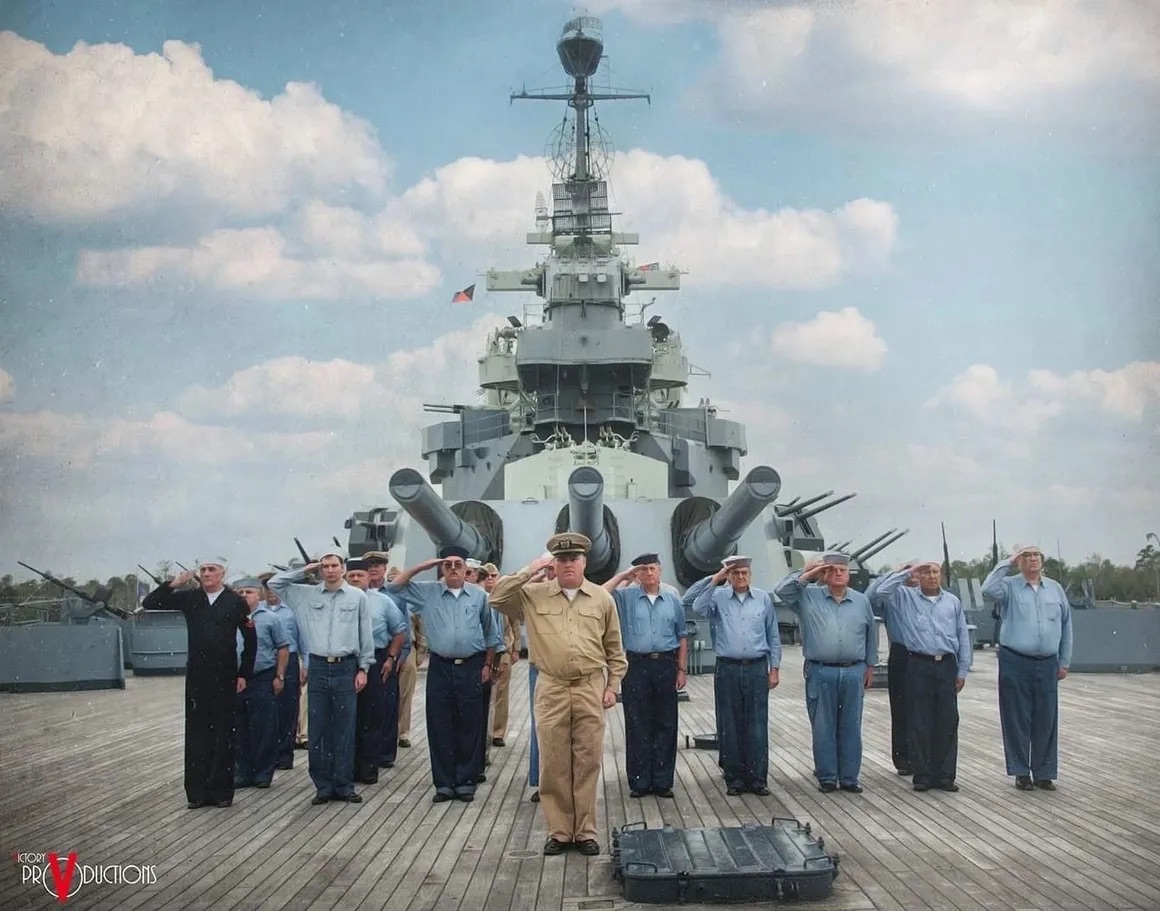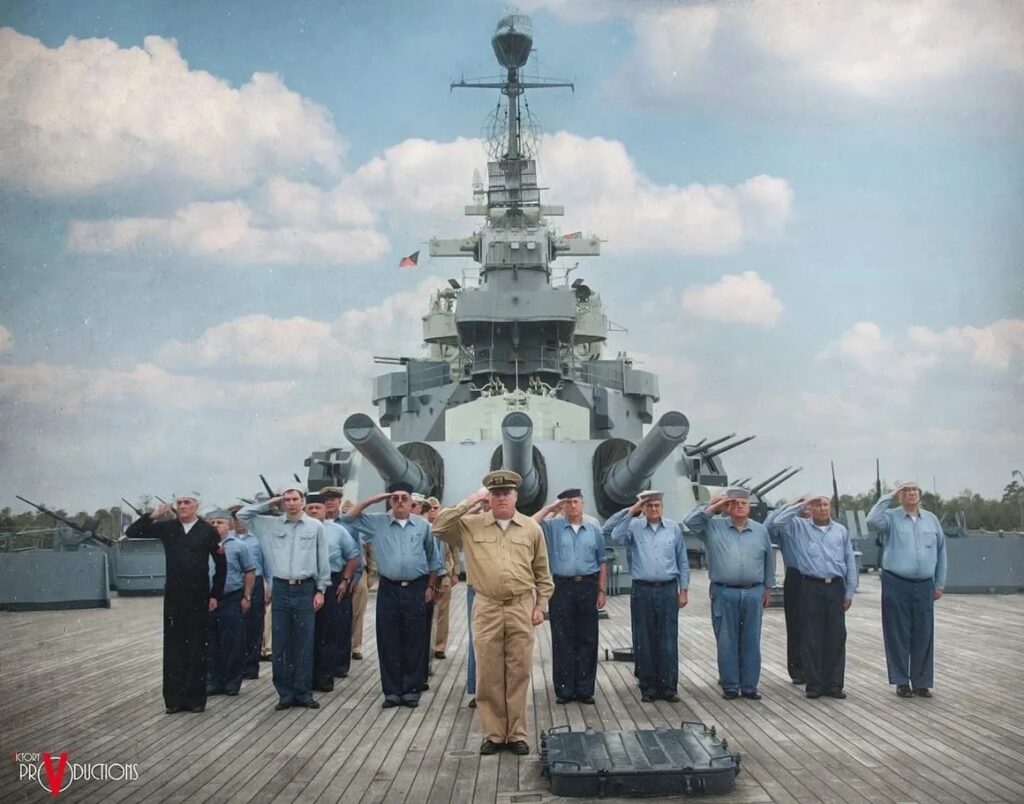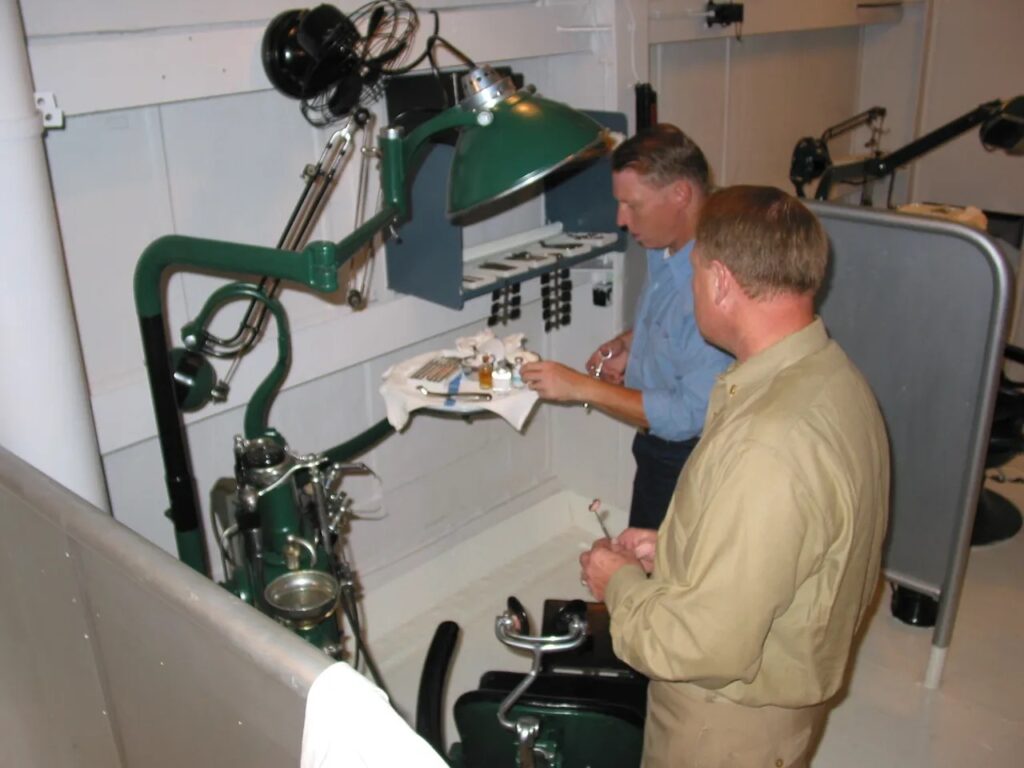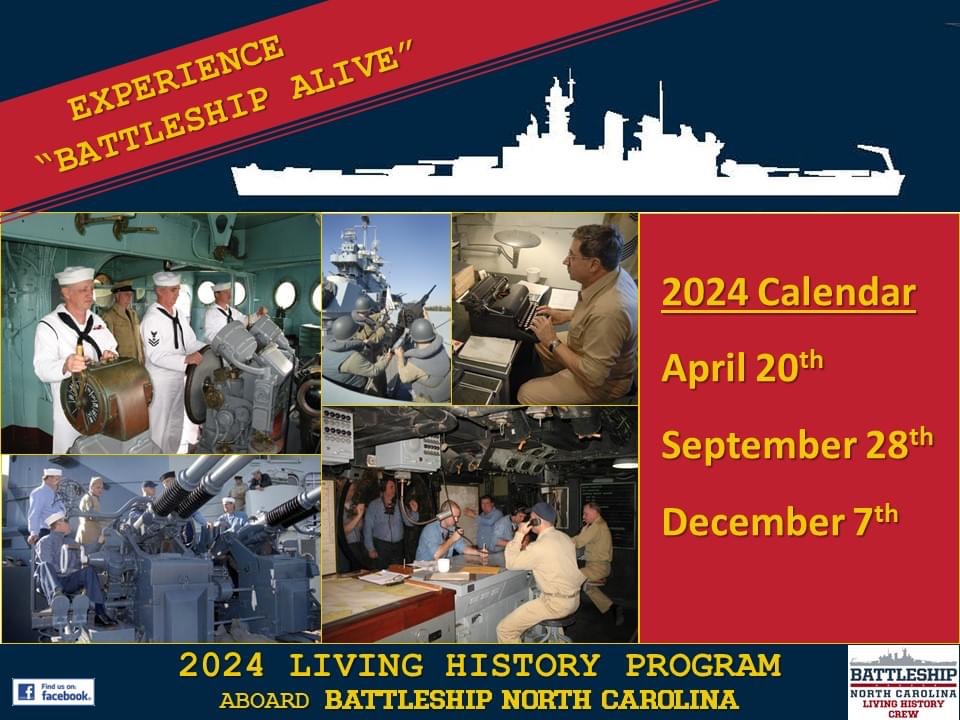LIVING HISTORY ABOARD THE BATTLESHIP NORTH CAROLINA

What is it that draws us to the past? To another era? Is it the stories told over and over again by our parents and grandparents? Is it the glamour of old movies showing us a gentler time with heroes and true love?

In 1998, Tom Brokaw, TV news anchor and journalist, wrote a book called, “The Greatest Generation.” In it, he talked about those who grew up during the Great Depression and then went off to fight in World War II. He said, “It is, I believe the greatest generation any society has ever produced.” He continued, “These men and women fought not for fame and recognition, but because it was the right thing to do.”
Chuck Hood, a member of the Battleship North Carolina Living History Crew (LHC), said he couldn’t agree more. The LHC was established more than 26 years ago and boasts membership of approximately 40 volunteers. Their mission is to support the USS NORTH CAROLINA Battleship Memorial by providing a living history program. In addition to providing information to the public about the ship itself and its rich history, they also do restoration work aboard the ship, provide artifacts for interpreted spaces on the ship, and provide manpower to support other Battleship related events.
The Living History Crew is part of several different organizations that support the activities of the USS North Carolina. The USS NORTH CAROLINA Battleship Memorial is comprised of the ship, and state employees who run the operational side of the ship. The Friends of the Battleship North Carolina, which is a not-for-profit group that supports the memorial. The USS NORTH CAROLINA Battleship Association is comprised of former crew members and their families, Chuck said.
Battleship Alive is one of the living history events supported by the LHC, and the next event will be on April 20 and coincide with the weeklong “Crew’s Reunion,” honoring the service of the remaining Naval sailors who were on board the USS NORTH CAROLINA, during the time she was commissioned, from 1941 to 1947. During the reunion event, there will be a memorial service honoring crew members who were lost to us in the past year. After the memorial service, the LHC will begin the Battleship Alive event at 8 am aboard the Battleship North Carolina Memorial.
This Living History program takes you back in time. The crew shows how drills were done on ship in terms of the guns, machinery and even the bridge. You can walk through the close quarters where the sailors slept and read actual letters from service men who served on the ship during World War II. Some areas of the ship have been reconstructed to replicate various departments that were critical to running the ship.
Life on the ship had challenges. “Stick 2,000 guys on a metal can and send them out to sea. There is no privacy, you’re stuck in the middle of nowhere, there are limited activities that you can do, but you build camaraderie. You form a bond with those with whom you served over shared experiences. You see different parts of the world together. You work together, and you work hard. The experience and your ship mates will always be a part of your life,” Chuck explained.

“Not to take away from modern sailors, because it’s always hard to be away from family, friends, and civilization, but I do believe that life at sea was rougher in World War II,” Chuck said. “First and foremost, they were at war. That is the main thing, but the accommodations weren’t nearly as nice as on modern day ships, the manning was denser, ships weren’t air conditioned, and you didn’t have TV, internet, or any of those things we have come to rely on. I like to show people one of the enlisted ‘heads,’ that’s Navy for bathroom! It has a half a dozen urinals, about a dozen toilets and two showers in that head. That there were only two showers tells you something about life on a ship back then!”
Touring the ship is certainly a walk back in time. Will Murray, also a LHC member, said, “My favorite thing is Sick Bay—it’s the coolest part of the ship. It’s all 1930s technology. We have a dentist’s office, pharmacy, and recovery room; and at the time, it was considered as good or better than any hospital in the country.”
Both Chuck and Will share a love of history. Will said, “Visiting the Battleship is a great opportunity to come and see a personal face put on the ship. You can read about it, but when you come aboard and see guys dressed like a World War II sailor, then you get a sense of how this was a living, breathing ship. Despite it being war time, guys were living their best life. They were coming out of the Great Depression, they were getting food, clothes, a place to sleep and were being paid.”
LHC members try to dress the part as well. “We get a lot of uniforms from veteran’s families after the veteran has died,” Chuck said. “Families don’t want the history and pride to die out in someone’s attic, so they donate it to us. We also source for original uniforms on eBay. The funny thing is that the donated uniforms are so small. We must be a bigger generation! I remember thinking how odd it was when I found out that Admiral Chester Nimitz was small. His naval accomplishments during World War II were huge. He was promoted to the rank of 5-star Admiral of the Fleet — one of only three others to hold that rank — but here he was, just a 5-foot, 8 inches tall guy with a job to do.”
The USS NORTH CAROLINA also had a job to do. Commissioned on April 9, 1941, the ship is classified as BB55, or the 55th battleship, and was built in the Brooklyn, New York shipyards. She has 15 “battle stars,” meaning that the USS NORTH CAROLINA was recognized fifteen times for meritorious participation in battle/major conflict or for having suffered damage during battle conditions. A crew of approximately 2,400 sailors served on the ship during wartime.
The Battleship North Carolina served in Western Pacific activities. In 1945, she participated in the invasions of Iwo Jima in February and then on Okinawa in March and April, 1945. She now proudly sits as a memorial to the men who served and to the 12,000 North Carolinians who were lost in battle in World War II, only 12 of whom were from the Battleship North Carolina.
There are only nine Battleships left in the world today. Eight of them are in the United States and one, the Mikasa, is in Japan. We are lucky to have the Battleship North Carolina available to us. Chuck Hood and Will Murray think that this is the best kept, most accessible of all of those ships. Both of them said, “If you haven’t been to the battleship you need to come. The battleship and LHC are targeted to all people, not just young people.”
On April 20, be a part of the Battleship Alive celebration for what remains of the Greatest Generation. Experience the Battleship North Carolina and all she has to offer. Take a step back in time and enjoy the World War II living history interpreters. Think about getting involved with the Living History Crew—what better way to honor the men and women of the Greatest Generation.
Events begin at 8:00 am.














Leave a Reply